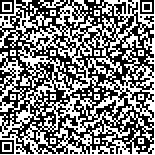| 摘要: |
| 文章利用闽东地区9县市区1969~2014年月平均气温和月降水资料,应用桑斯维特法计算年蒸散量,从而求出年可利用降水量。利用线性倾向估计法分析年降水量和年蒸散量的变化趋势,结果表明: 46年来闽东地区年降水量呈不显著的增多趋势,西北部山区降水多于东南部沿海; 而年蒸散量呈显著的增大趋势,东南部沿海蒸散能力大于西北部山区。对近46年闽东9县市区年可利用降水量场进行经验正交分解(EOF),通过显著性检验的3个主要特征向量和所对应的时间系数代表了闽东地区年可利用降水资源的时空变化特征,结果表明,第一模态(占总方差贡献的97.61%)显示闽东地区年可利用降水资源最主要的分布特征,呈现西北部山区向东南部沿海递减的空间特点,即内陆山区可利用降水资源比沿海更为充沛,在时间上呈略增变化趋势; 第二模态(占总方差的0.96%)反映出闽东东部与西部县市呈现反相变化的分布特征,近46年发生东多西少的频率略高于东少西多,但不显著; 第三模态(占总方差的0.58%)反映出北部与南部县市呈反相变化的分布特征,近46年发生北多南少的频率较高于北少南多。闽东地区年可利用降水资源具有典型的西北向东南递减的全区域型分布加上东西型、南北型两种扰动分布的空间特点。 |
| 关键词: 闽东 桑斯维特法 蒸散量 可利用降水量 经验正交分解(EOF) |
| DOI:10.7621/cjarrp.1005-9121.20161031 |
| 分类号: |
| 基金项目: |
|
| SPATIAL-TEMPORAL CHARACTERISTICS OF ANNUAL UTILIZABLE PRECIPITATION RESOURCE IN EAST FUJIAN |
|
Ruan Cuibing, Lin Zhong, Lin Zhaohua
|
|
Ningde Municipal Meteorological Bureau of Fujian,Ningde 352100, China
|
| Abstract: |
| On the basis of monthly average temperature and precipitation data of 9 counties in east Fujian from 1969-2014, this paper calculated the annual evapotranspiration rate and the annual utilizable precipitation using the Thornthwaite method. And then, it analyzed changing trend of the annual precipitation and evapotranspiration using the linear trend estimation. Finally, it assessed the spatial-temporal change characteristics of utilizable precipitation in east Fujian using the empirical orthogonal function (EOF) analysis. The results showed that there was an insignificant increase of annual precipitation in east Fujian for the past 46 years, which was more in northwest mountainous area than that in the southeast coast; however, annual evapotranspiration in southeast coast was more than that in northwest mountainous area. Mode-1 ( accounting for 97.61% of total variance contribution) which represented the most dominant distribution characteristics of utilizable precipitation, demonstrated the spatial featuresdecreasing from northwest mountainous area to southeast coast. It meant the mountainous area had more abundant utilizable precipitation than coast; Mode-2(accounting for 0.96% of total variation) presented the reversed phase change distribution characteristics between east and west , the frequency of higher east / lower westpatternwas slightly more than higher west / lower east pattern for the past 46 years; Mode-3 (accounting for 0.58% of total variation) represented the reversed phase change distribution characteristics between north and south, the frequency of higher north / lower south pattern was comparatively more common than lower north/higher south pattern. The utilizable precipitation in east Fujian had three main distribution features: the typical decreasing spatial feature from northwest to southeast, two disturbance distribution patterns from the east to west and the north to south. |
| Key words: east Fujian Thornthwaite method evapotranspiration utilizable precipitation empirical orthogonal function (EOF) |

